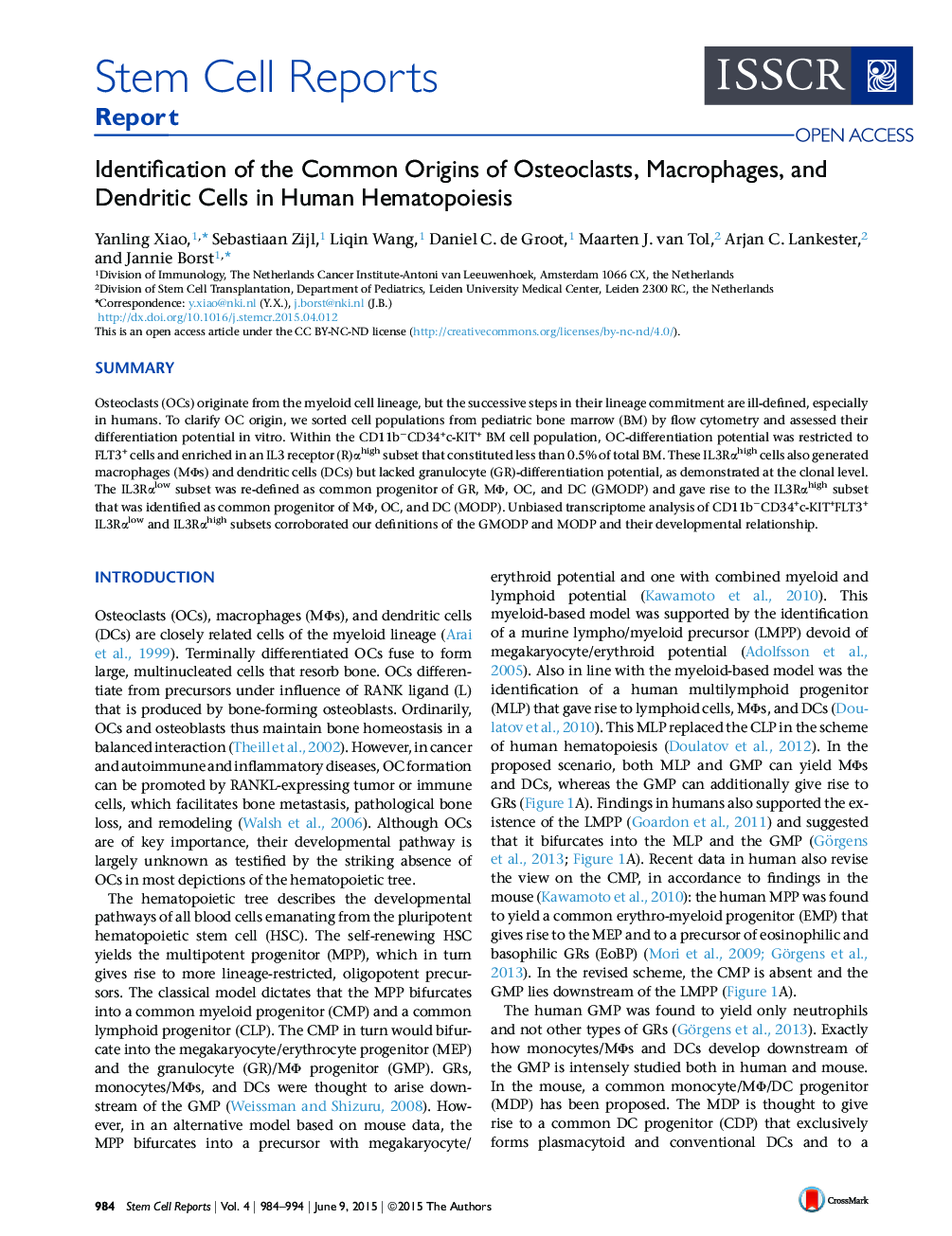| Article ID | Journal | Published Year | Pages | File Type |
|---|---|---|---|---|
| 2093540 | Stem Cell Reports | 2015 | 11 Pages |
•CD34+c-Kit+Flt3+ IL3Rαhigh phenotype identifies human MΦ/OC/DC progenitor (MODP)•CD34+c-Kit+Flt3+ IL3Rαlow phenotype identifies GMODP, oligopotent for GR/MΦ/OC/DC•CD34+c-Kit+Flt3+ IL3Rαlow GMODP is upstream of CD34+c-Kit+Flt3+ IL3Rαhigh MODP•Transcriptome analysis supports definition and relationship of GMODP and MODP
SummaryOsteoclasts (OCs) originate from the myeloid cell lineage, but the successive steps in their lineage commitment are ill-defined, especially in humans. To clarify OC origin, we sorted cell populations from pediatric bone marrow (BM) by flow cytometry and assessed their differentiation potential in vitro. Within the CD11b−CD34+c-KIT+ BM cell population, OC-differentiation potential was restricted to FLT3+ cells and enriched in an IL3 receptor (R)αhigh subset that constituted less than 0.5% of total BM. These IL3Rαhigh cells also generated macrophages (MΦs) and dendritic cells (DCs) but lacked granulocyte (GR)-differentiation potential, as demonstrated at the clonal level. The IL3Rαlow subset was re-defined as common progenitor of GR, MΦ, OC, and DC (GMODP) and gave rise to the IL3Rαhigh subset that was identified as common progenitor of MΦ, OC, and DC (MODP). Unbiased transcriptome analysis of CD11b−CD34+c-KIT+FLT3+ IL3Rαlow and IL3Rαhigh subsets corroborated our definitions of the GMODP and MODP and their developmental relationship.
Graphical AbstractFigure optionsDownload full-size imageDownload as PowerPoint slide
